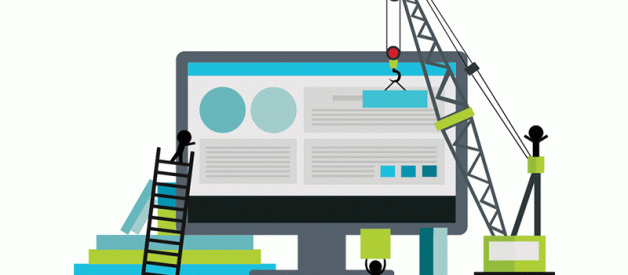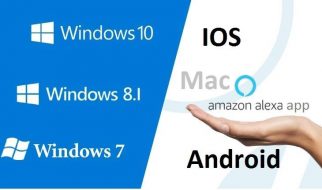
For anyone who doesn?t work directly with web development, concepts like front-end vs. back-end development can be challenging to wrap your head around. Pile on all of the frameworks, programming languages, APIs, and libraries that front-end developers use to build apps, and it can get very confusing.
To help you become a pro in all things front-end and back-end development, we?ve written a series of articles that cover what you need to know about this area fundamentals of front-end and back-end development ? in a way non-developers can understand.
The front-end and the back-end development
Two keywords to understand how websites work you might have heard before are the frontend and the backend. These are often talked about (and taught) separately and seen as two very different things, but they are both essential and closely connected in most web development projects.
The front end, also called ?client-side? programming, is what happens in the browser. It?s everything the user sees and interacts with.
The back end, also called ?server-side? programming, happens on the server and the database. It?s the machinery that works behind the scenes to power those fancy features users interact with on the client-side.
Read more: What to Choose between Native or Hybrid Development
Difference between Front-end and Back-end
Role of Front-end vs Back-end
Both play a crucial role in web development and although they have their fair share of differences, they are like two sides of the same coin. Front-end is all about the visual aspects of the website that a user can see and experience. On the contrary, everything that happens in the background can be attributed to the back-end web development. It?s more like an enabler for frontend web experience.
The developer of Front-end vs Back-end
The web designer is the most common job title for the frontend web development and the role of a web designer is to design and rebuild websites keeping the visual aspects in mind. Backend developers are the ones who make sure the data and systems requested by the frontend application or software are efficiently delivered. Backend developers handle everything that happens in the background.
Essentials of Front-end vs Back-end
Front-end is also referred to as the ?client-side? as opposed to the backend which is basically the ?server-side? of the application. The essentials of backend web development include languages such as Java, Ruby, Python, PHP, .Net, etc. The most common frontend languages are HTML, CSS, and JavaScript.
The Basics of Front-End Tools & Technology
Back in the day, websites were simple, static text sites with a bit of formatting and maybe even some animation. That was all thanks to HTML and CSS.
It?s important to note that front-end development has changed significantly over the past 10 to 15 years with the explosive growth of JavaScript, which wasn?t as ubiquitous on the front end as it is now, or even as common on the back end.
Some of the core technologies used in front-end web development include:
HTML: The Organizer
- HTML is how every site on the web is organized, so it?s a big one you can?t live without in front-end development.
- HTML5 is the latest HTML specification. Get a full run-down of this evolving backbone of front-end web technology and learn about one of its cooler features, Canvas.
JavaScript: The Multitasker
What was once a supplementary tool to make web pages more interactive is now the most ubiquitous client-side technology. JavaScript is more than just a language ? it?s an entire ecosystem that spans frameworks, task runners, server-side development, and more.
CSS: The Stylist
Cascading Style Sheets (CSS) is how developers add styling and effects to a website. Styles can be added globally, then layered on without changing that fundamental styling that gets applied to a whole site.
- CSS is always evolving. Get to know what?s new with the latest and greatest version, CSS3.
- Many front-end developers use a CSS preprocessor to make writing lots of lines of CSS even faster.
- CSS front-end frameworks like Foundation or Bootstrap can help you create polished websites in a snap.
UI and UX Design: Bringing the Front-end to Life
We?d be remiss to talk about front-end development without mentioning the design aspect ? two things that go hand in hand in website and app development. Many front-end developers wear a few hats, with web designers and UI/UX skills in their toolbox. If a designer knows what kinds of things are possible with front-end code, they?re better able to design intuitive, interactive UIs ? and vice versa.
Read more: Mobile Apps vs Web ? Apps: Which is the Better Option?
The Basics of Back-End Tools Technology
Back-end development can be much more varied than front-end development, which is largely driven by JavaScript, HTML, CSS, and various front-end frameworks using these languages.
To simplify things, we?ll break the server-side down into four main components of a ?software stack?: the server, the database, the operating system, and the software.
Here?s some more information about each of these components of the backend.
1. Languages & Frameworks
A variety of programming languages and frameworks are involved in building the software aka back-end. Frameworks are libraries of pre-written code with a pre-imposed structure that a back-end developer can use according to the requirements and needs. Whereas, a programming language is a superset of scripting languages like Ruby, Java, Python, PHP, Perl, Erlang, and Node.js which can be used to write instructions for execution.
2. Web Servers
Web servers are computer programs that store, process and deliver web pages to the users. The most popular ones include Apache (an open-source web server which is currently used by 50% of all websites) and NGINX which is good for reverse proxying, caching, load balancing and media streaming processes.
3. Database Management Systems
A Database Management System (DBMS) is a collection of programs that enables its users to access a database, manipulate, interpret and represent data. MySQL is the world?s most popular open-source relational database. It?s not only accessible but also free. Its ease of setup and speedy performances make it a favorite among many backend developers. On the other hand, MongoDB is an open-source NoSQL database system which is closely associated with a JavaScript-based set of technologies like ExpressJS, AngularJS, and NodeJS.
4. Local Development Environments
All back-end developers will swear by the importance of a local test environment. The advantage of using a local site that?s visible only to you gives you the liberty to try codes and experiments before the site goes live. XAMPP and WampServer are examples of open source windows development environments that allow users to use web applications with Apache, PHP, and MySQL database.
5. Collaboration Services
Since back-end and front-end operations go hand-in-hand, it?s ideal for developers on both sides to remain connected with each other. Platforms like Slack, Asana, Jira, and Trello help teams to work effectively with better collaboration.
6. Website Performance Testers
In the digital age, the average attention span of a human being is a mere 8 seconds. Therefore, the speed at which a site loads influences site traffic to a huge extent. Even a one-second delay can make a customer bid farewell to your site. That?s why back-end developers consider speed testers like Google PageSpeed Insights and Full-Page Load Tester as important back-end development tools. These not only provide reports of the site speed but also recommend tweaks you can do to make your page faster.
https://www.sagaratechnology.com/blog/2019/12/31/the-fundamentals-of-front-end-and-back-end-development/
(SA)

